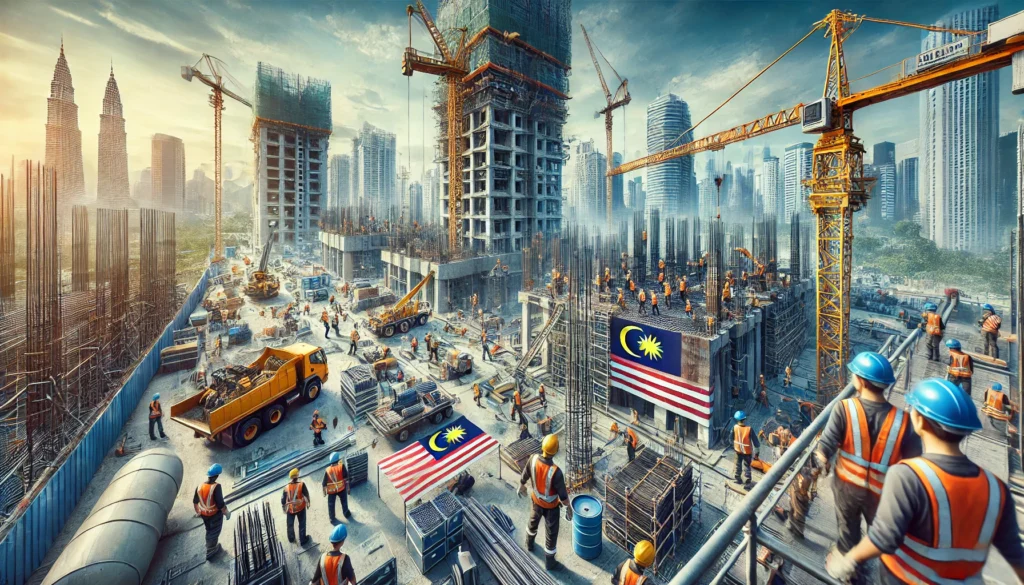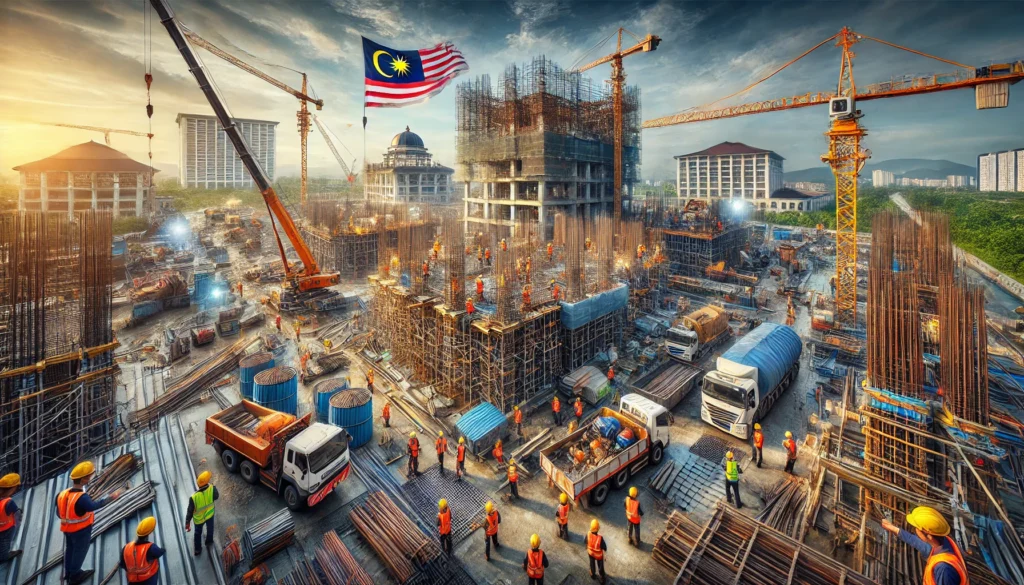Building construction is a complex process that requires careful planning, precise execution, and coordinated efforts among various stakeholders. In Malaysia, where the construction industry is a key driver of economic growth, understanding the different construction methods and phases is crucial for successful project delivery. This blog explores the various building construction methods used in Malaysia, from mobilization to project completion, and highlights the best practices that ensure quality and efficiency in construction projects.
The Construction Process: An Overview
Building construction typically follows a structured process that can be divided into several key phases:
- Mobilization:
- This is the initial phase where the groundwork for the project is laid. Mobilization involves setting up the construction site, including site offices, temporary utilities, and access roads. In Malaysia, this phase also includes obtaining the necessary permits and approvals from local authorities. Mobilization is crucial as it sets the stage for the entire construction process.
- Site Preparation:
- Once the site is mobilized, the next step is site preparation. This includes clearing the land, excavating, and grading to ensure a stable foundation for the building. In Malaysia, site preparation often involves dealing with challenging soil conditions, such as soft clay or peat, which require specialized techniques like soil stabilization or piling.
- Foundation Work:
- The foundation is one of the most critical components of a building, as it supports the entire structure. In Malaysia, common foundation methods include shallow foundations (e.g., pad, strip, and raft foundations) for smaller buildings, and deep foundations (e.g., piles and caissons) for larger structures or those built on unstable soils.
- Superstructure Construction:
- The superstructure refers to the part of the building that is above ground. This phase involves constructing the main framework of the building, including columns, beams, floors, and walls. In Malaysia, reinforced concrete is the most commonly used material for superstructures due to its durability and versatility. However, steel and timber are also used, depending on the project requirements.
- Envelope Construction:
- The building envelope consists of the exterior elements, such as walls, windows, doors, and the roof, which protect the interior from the elements. In Malaysia, building envelopes must be designed to withstand high humidity, heavy rainfall, and intense sunlight. Common materials include bricks, concrete blocks, glass, and modern cladding systems like aluminum composite panels.
- Interior Construction:
- Once the superstructure and envelope are complete, attention shifts to the interior. This phase involves installing partitions, ceilings, flooring, and finishes, as well as mechanical, electrical, and plumbing (MEP) systems. In Malaysia, interior construction often emphasizes efficient space utilization and the use of sustainable materials.
- MEP Systems Installation:
- Mechanical, electrical, and plumbing systems are integral to the functionality of a building. These systems include HVAC (heating, ventilation, and air conditioning), electrical wiring, water supply, and drainage systems. In Malaysia, MEP installations must comply with stringent local regulations and standards to ensure safety and efficiency.
- Final Finishing and Inspections:
- The final finishing phase involves adding the aesthetic elements that make the building habitable, such as painting, tiling, and installing fixtures. Following the completion of construction work, the building undergoes a series of inspections to ensure compliance with local building codes and regulations. In Malaysia, these inspections are conducted by both the contractor and local authorities.
- Commissioning and Handover:
- The commissioning process involves testing and adjusting all building systems to ensure they operate as intended. Once commissioning is complete, the building is handed over to the owner. In Malaysia, the handover process includes providing the owner with all necessary documentation, such as as-built drawings, operation manuals, and warranties.
- Post-Construction Activities:
- After the handover, post-construction activities include any required adjustments, repairs, and the beginning of the defect liability period (DLP), during which the contractor is responsible for fixing any defects that arise. In Malaysia, the DLP typically lasts between 12 to 24 months, depending on the contract terms.

Building Construction Methods in Malaysia
In Malaysia, various construction methods are employed depending on the type of project, site conditions, and client requirements. Some of the most common methods include:
- Traditional Construction:
- Traditional construction methods, such as brick-and-mortar, are still widely used in Malaysia, particularly for residential projects. This method involves the use of bricks, blocks, and mortar to build walls and other structural elements. It is valued for its durability and the availability of materials.
- Precast Concrete Construction:
- Precast concrete involves casting concrete components off-site and then transporting them to the construction site for assembly. This method is popular in Malaysia for its speed and quality control. Precast components are used in various applications, including beams, columns, slabs, and facades.
- Steel Frame Construction:
- Steel frame construction is commonly used for high-rise buildings, commercial structures, and industrial facilities in Malaysia. This method involves constructing a skeleton frame of vertical steel columns and horizontal I-beams to support floors, roofs, and walls. It is known for its strength, flexibility, and ease of assembly.
- Modular Construction:
- Modular construction is an innovative method where building modules are prefabricated off-site and then assembled on-site. This method is gaining popularity in Malaysia due to its efficiency, reduced construction time, and minimal site disruption. It is particularly suited for hotel developments, residential complexes, and schools.
- Green and Sustainable Construction:
- With the growing emphasis on sustainability, green construction methods are becoming more prevalent in Malaysia. These methods focus on using eco-friendly materials, energy-efficient designs, and sustainable construction practices to minimize environmental impact. Examples include the use of recycled materials, rainwater harvesting systems, and solar panels.
Best Practices in Building Construction
To ensure successful project outcomes, several best practices should be followed during the building construction process:
- Comprehensive Planning and Design:
- A well-thought-out plan and design are essential for successful construction. Involving all stakeholders early in the planning phase ensures that potential issues are identified and addressed before construction begins.
- Quality Control and Assurance:
- Implementing rigorous quality control and assurance measures throughout the construction process helps maintain high standards and ensures that the final product meets the required specifications.
- Safety Management:
- Safety is a top priority on construction sites. Adhering to local safety regulations and implementing comprehensive safety management plans can prevent accidents and injuries.
- Sustainability Considerations:
- Incorporating sustainable practices into construction not only benefits the environment but also enhances the building’s long-term value. This includes using energy-efficient systems, reducing waste, and choosing sustainable materials.
- Effective Communication and Collaboration:
- Clear communication and collaboration among all project stakeholders are critical for avoiding misunderstandings and ensuring that the project stays on track.
Conclusion
Building construction in Malaysia is a dynamic and multifaceted process that requires careful planning, skilled execution, and adherence to best practices. By understanding the various construction methods and phases, industry professionals can deliver projects that meet client expectations, comply with regulatory standards, and contribute to the sustainable development of Malaysia’s built environment.
Whether you’re involved in a small residential project or a large commercial development, staying informed about the latest construction methods and best practices is essential for success in the Malaysian construction industry.


